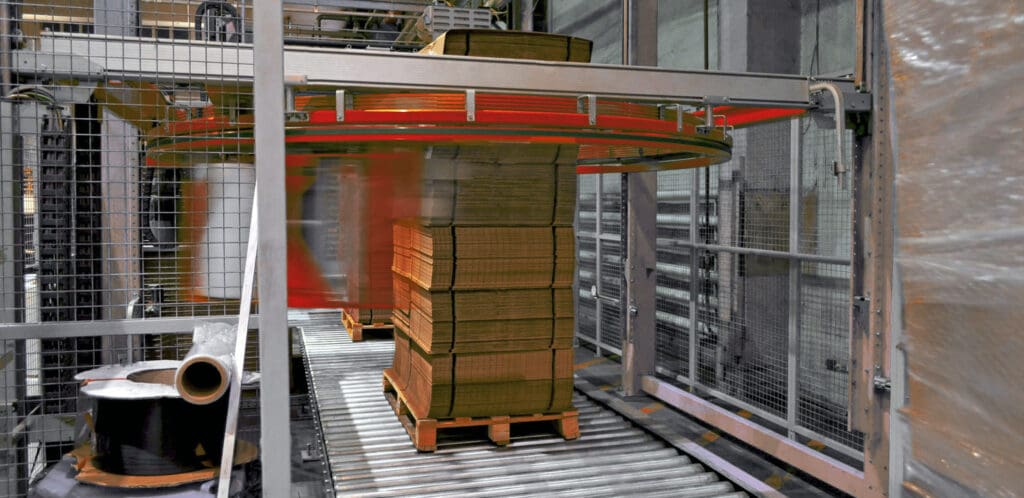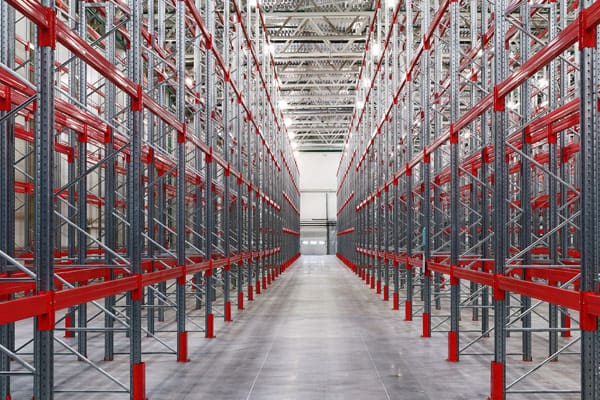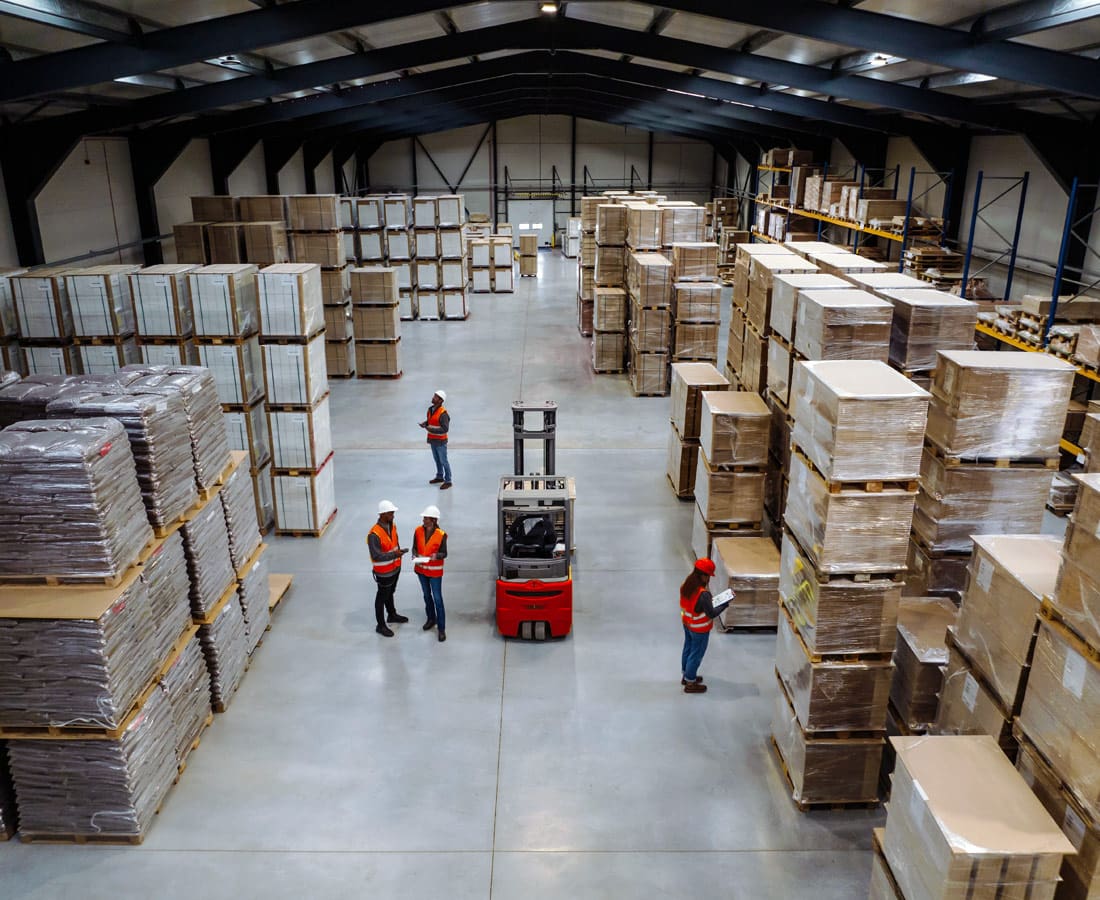Getting granular to improve your operations
There’s no part of the manufacturing or distribution process that can’t be improved. But while many facilities are investing in automated picking and storage systems, have you considered the opportunity afforded by automated packaging systems? They solve labor struggles and reduce waste — setting you apart from your competitors.

Manual packaging is inefficient packaging
You need to get orders out the door quickly and carefully. Packages that arrive damaged or in the wrong sized boxes cost you money. But if you carry a wide range of products, one-size-fits-all packaging systems may not be able to accurately and cost efficiently prepare your goods for shipping, even if you’re using protective packaging.
Automated packaging systems reduce labor and waste
Every product your customers order needs the right box, bags, envelopes, and void fill to ensure it gets safely to its destination. While manually packing operations take care of varied orders, they’re not the most efficient solution. Automated packaging systems mean less labor, fewer damaged orders, and a lower environmental impact. That’s the kind of win-win-win ISD creates.


Solving operational bottlenecks with automation
Something no operational leader wants to see? Picks stacking up at the docks, waiting to be packed up, manifested, and sent to customers. Slow packaging systems mean lost money. Automating this stage of the process with autobaggers, case sealers, document inserters, dunnage systems, and other technology streamlines your system and reduces human error.
Unique products need unique packaging automation
A bottle of shampoo. A drum set. Chess boards with 32 individual pieces. As e-commerce and omnichannel retail grow, distribution centers need to stock — and package — a growing list of SKUs. But sending a small item in a standard box means using lots of dunnage, or padding material like bubble wrap, paper wrapping, and other void fill packaging. Environmentally-conscious customers don’t like to see packaging waste on their front steps. And you don’t like to see it on your bottom line. Automated packaging systems fix that.


Autobaggers
Autobaggers bagging machines fill and seal packages into different sizes of bags.
Semi-autobaggers can handle similar-sized items and require an operator to load an empty bag and press a button to seal it. Truly automatic baggers, or autobaggers, are fully autonomous, and are able to fill, seal, and transport packages on their own.

Erectors
Case erector: these machines automatically form and fold boxes, or cases, for products that have been picked and are ready to go out.
Robotic case erector: these machines can form a range of boxes, or cases, on demand, so that they can be set up before your shipping station and create the right-sized box for every order, adjusting to order size.

Shrink Wrappers
Pallet shrink wrappers: these machines stretch-wrap stacked products on a pallet, keeping the products protected during transport or storage.
Semi-automatic shrink wrappers do the work of wrapping the pallet, but require an operator to load and unload pallets from the machine.
Automatic shrink wrappers take pallets from a conveyor, wrap it according to programming, and convey it to the end of the line, all without human intervention.



Document Inserters
Document inserter: these machines automatically pick up, fold, and place pre-printed paper documents inside of cartons. Those documents may include invoices, returns information, packing slips, coupons, or other promotional material.
Document printer and inserter: these machines print required materials on demand, matching carton information with an internal database to require what is needed. Once documents are printed, they are inserted into the correct carton.


Case Sealers
Case sealers: these close corrugated boxes along the top and bottom using adhesives like tape or glue for a uniform box size.
Semi-automatic case sealers can adapt to different carton sizes and variable packaging, with a human required to close carton flaps, and automatic case sealers take care of all stages of closing, from folding down flaps to sealing autonomously.


Dunnage system
Dunnage system: refers to padding materials used to protect goods during shipping. Dunnage can include bubble wrap, corrugated paper, and air pillows.
Get packages to customers safely and smoothly with a custom packaging solution
Whether a customer orders two items or twenty, they expect their package to get to them quickly, in one piece, and with minimal extra packing materials. Custom-built automated packaging systems increase throughput while exceeding customer expectations.
Handle high volume packaging with ease
As a plant leader, you need to get a high volume of goods off the line and out the door quickly and reliably. Automated packaging systems help you do that by getting goods into protective packaging and ready for shipping. And they free up labor for higher-skilled tasks, meaning you can run leaner and faster while still meeting customer demands.


Raising throughput by packing smarter. Even if your team is highly trained and fully staffed, manual packaging systems slow down your productivity by requiring lots of labor to get every order out the door. There’s a wide range of packaging automation options, including:



Shrink Wrappers
Pallet shrink wrappers: these machines stretch-wrap stacked products on a pallet, keeping the products protected during transport or storage.
Semi-automatic shrink wrappers do the work of wrapping the pallet, but require an operator to load and unload pallets from the machine. Automatic shrink wrappers take pallets from a conveyor, wrap it according to programming, and convey it to the end of the line, all without human intervention.



Document Inserters
Document inserter: these machines automatically pick up, fold, and place pre-printed paper documents inside of cartons. Those documents may include invoices, returns information, packing slips, coupons, or other promotional material.
Document printer and inserter: these machines print required materials on demand, matching carton information with an internal database to require what is needed. Once documents are printed, they are inserted into the correct carton.
Automatic packaging systems help you save on labor costs while getting more orders out.




Not Sure Where to Get Started with Automation?
Take the first step and visit our automation insights and resources.
Go to Automation Insights
Related Resources
Related Solutions


Automated Storage & Retrieval


Conveyor Systems


Shipping Systems


Robotics


Storage


Cubing & Weighing


Automated Labeling


Talk with an Automation Expert


First-class thinking on secondary packaging – The future of packaging.
You need a partner who understands shifting customer demands and is ready to help you meet them. ISD knows that there’s no one-size-fits-all approach to any part of operations, from production to packaging. You can count on us for custom solutions that help you keep ahead of the competition.
Let’s Talk








